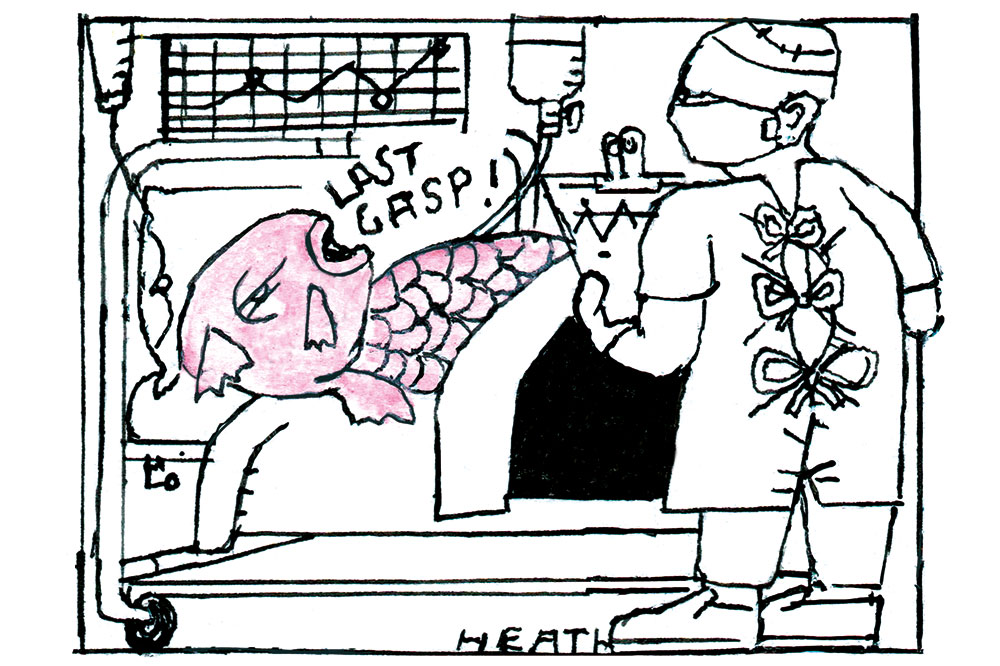When I say ‘Scottish salmon’ what do you see? I bet it’s a muscular 20-pounder flashing up a river, or a silver grilse leaping out of the water for the sheer joy of it. I bet it’s not a flabby beast, covered in sea lice, possibly half-choked by micro-jellyfish in its gills, living in waters so polluted that the seabed beneath, contaminated by salmon poo, is lifeless.
Fish kept in cages in comparatively calm loch waters do not get the exercise they need to firm up their flesh. They look good, pink and pretty, but their raw flesh is so soft you can spread it like butter. Fish kept in open sea cages and swimming against rough seas will have firmer flesh, but these farms are perhaps worse: when seals or storms tear open the cages, thousands of salmon escape. And they threaten the wild salmon, by spreading disease or interbreeding in the rivers.
Should you eat wild salmon? Well, you are unlikely to find one, or to be able to afford it if you could.

Get Britain's best politics newsletters
Register to get The Spectator's insight and opinion straight to your inbox. You can then read two free articles each week.
Already a subscriber? Log in







Comments
Join the debate for just $5 for 3 months
Be part of the conversation with other Spectator readers by getting your first three months for $5.
UNLOCK ACCESS Just $5 for 3 monthsAlready a subscriber? Log in